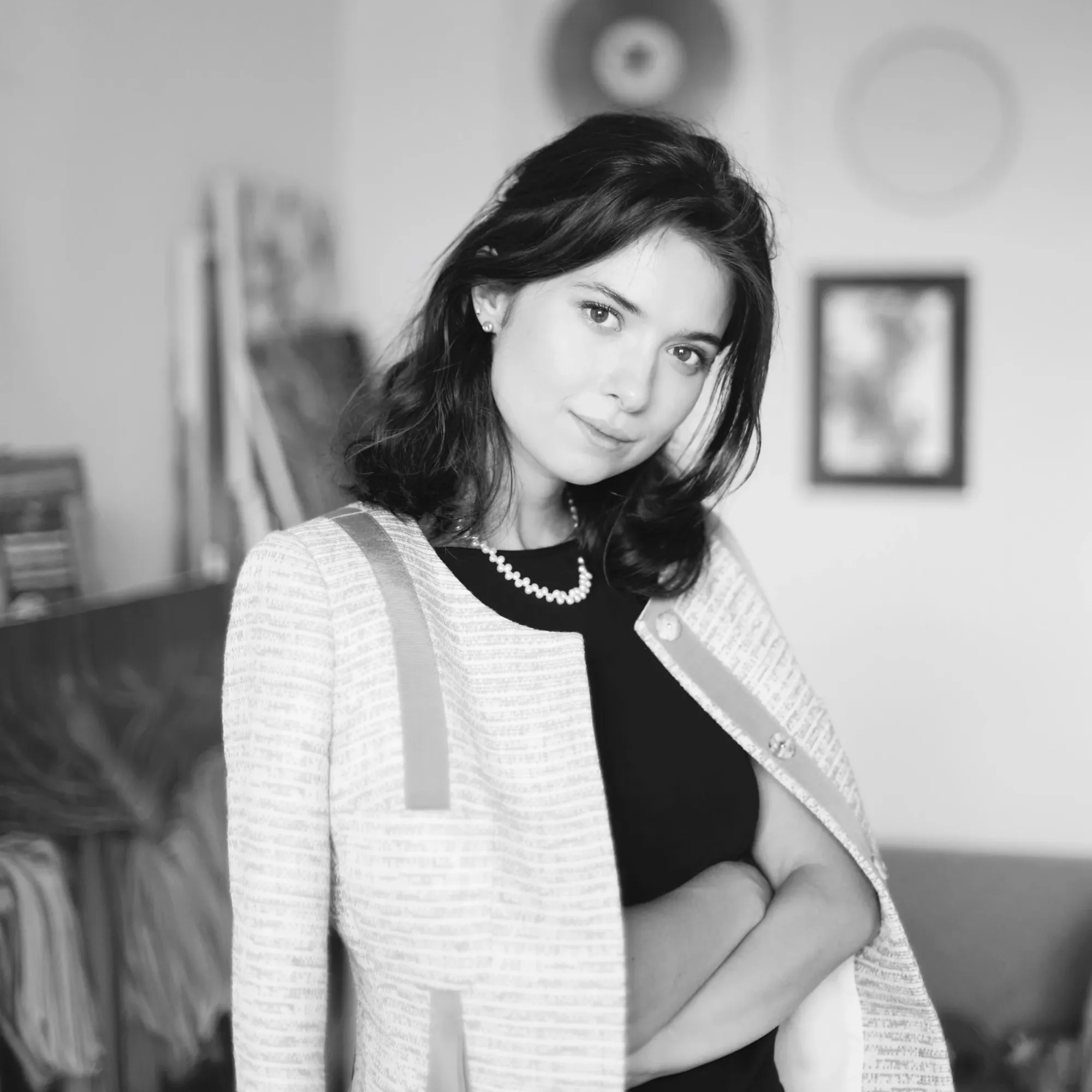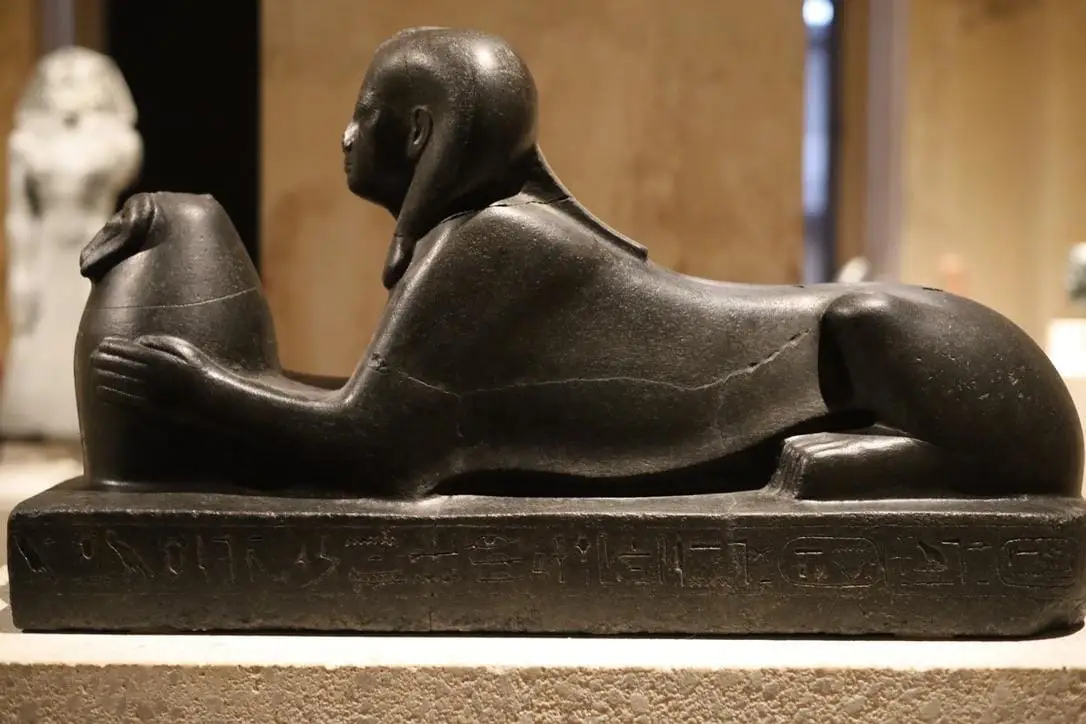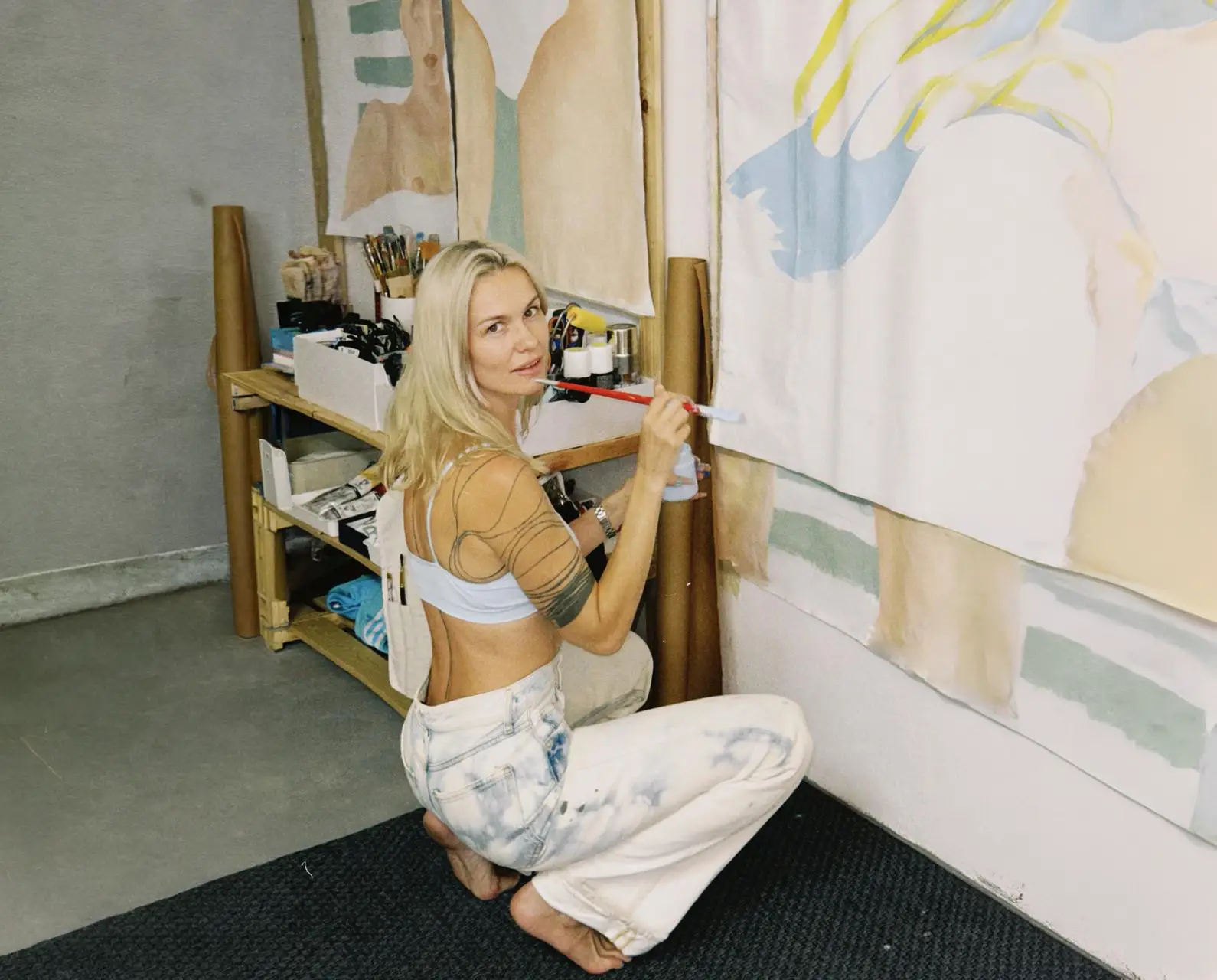Van Gogh's Masterpieces: His Top 10 Most Famous Paintings
Vincent van Gogh stands among the most famous artists worldwide while his Post-Impressionist masterpieces have changed the modern art landscape significantly. During his life he struggled to gain recognition but now his paintings stand among the world’s most celebrated and valuable works. Art lovers and scholars alike remain enthralled by his masterpieces which feature bold colors together with expressive brushstrokes and deep emotional resonance. Millions of visitors from around the world travel to museums to experience Van Gogh’s artistic genius in person through his works.
Art collectors now buy Van Gogh pieces at auction for record prices including Verger avec Cyprès which fetched over $117 million during a Christie's auction in 2022 to establish a new valuation standard for his art. Museums worldwide continue to maintain his artistic heritage to make sure his vision survives.
Vincent van Gogh produced substantial artistic influence during his short career that lasted only ten years but he is still considered one of history's most important artists. Vincent van Gogh entered the world in 1853 in the Netherlands and started his professional life working in religious ministries and teaching before he discovered his real calling through art. Despite not receiving formal artistic education he created over 2,100 pieces of art which included approximately 860 oil paintings.
Theo van Gogh his younger brother emerged as an essential influence throughout his artistic journey by sustaining him as a prosperous art dealer. Vincent was able to concentrate on his artwork because of the financial sustenance and emotional backing Theo provided. Their correspondence reveals crucial details about Vincent’s mental processes and artistic growth.
Even though his art gained limited recognition during his lifetime Van Gogh actively participated in the artistic community of his era and had connections with Post-Impressionist artists. Vincent Van Gogh developed his artistic style through collaboration with Paul Gauguin while drawing inspiration from both Impressionism and the emerging Symbolist movement that focused on emotional expression through color. His short but powerful connections with the avant-garde circles in Paris and Arles resulted in significant advancements in his color application and artistic techniques.
The combination of Van Gogh’s innovative use of color and brushwork with his profound emotional expression established him as a foundational figure in modern art while inspiring countless artists and collectors throughout history. Van Gogh experienced personal difficulties and received little recognition while alive yet today his works stand as some of the most admired pieces in art history.
Van Gogh and Japonisme
Japanese art and culture in late 19th century Europe known as Japanism or Japonisme deeply influenced Van Gogh's artistic development. Van Gogh started his collection of Japanese woodblock prints in 1887 after first seeing them during his time in Paris. His adoption of vibrant colors and bold outlines alongside flattened spatial perspectives demonstrates the impact of Japanese prints on his work. The techniques Van Gogh adopted enabled him to develop his personal style into more expressive and symbolic color usage.
Van Gogh held high regard for Japanese prints because they frequently depicted refined natural scenes including flowers, birds and landscapes. Van Gogh's renowned paintings such as Irises and Almond Blossom replicate the graceful simplicity and balanced style of Japanese prints. Van Gogh's use of cropped images and his dedication to representing natural beauty reflect his profound admiration for Japanese art which captures both the fragile aspects and the strength of nature.
Van Gogh’s adoption of Japonisme was a philosophical decision in addition to being an aesthetic preference. His artistic principles found resonance in these ideas which centered around nature connection, emotional expression needs and exploration of new artistic territories. Van Gogh integrated Eastern artistic elements into his work while maintaining his distinct vision to establish a lasting impact on Western art history.
1. The Starry Night (1889)
Vincent Van Gogh created The Starry Night during his time at Saint-Paul-de-Mausole asylum in Saint-Rémy-de-Provence and it remains one of the world’s most famous and treasured paintings. The night sky swirls with brilliant stars and a radiant crescent moon which generates a dreamy mystical atmosphere. The forceful brushstrokes produce a dynamic movement in the scene which mirrors Van Gogh's inner emotional chaos alongside his quest for nature's comfort.
The Starry Night remains a perfect representation of Van Gogh's artistic vision because it uses movement and color to express raw emotion. A vivid sky that pulses with energy alongside undulating hills and a dominant cypress tree gives viewers an impression of perpetual movement which suggests that the cosmos is a living entity that breathes. By utilizing deep blues against golden yellows he creates striking contrasts between darkness and light which reflect his personal battles and his aspirations for peace. This work transcends conventional landscapes to become a profound expression of Van Gogh’s innermost feelings, establishing it as one of history’s most moving and relatable artworks.
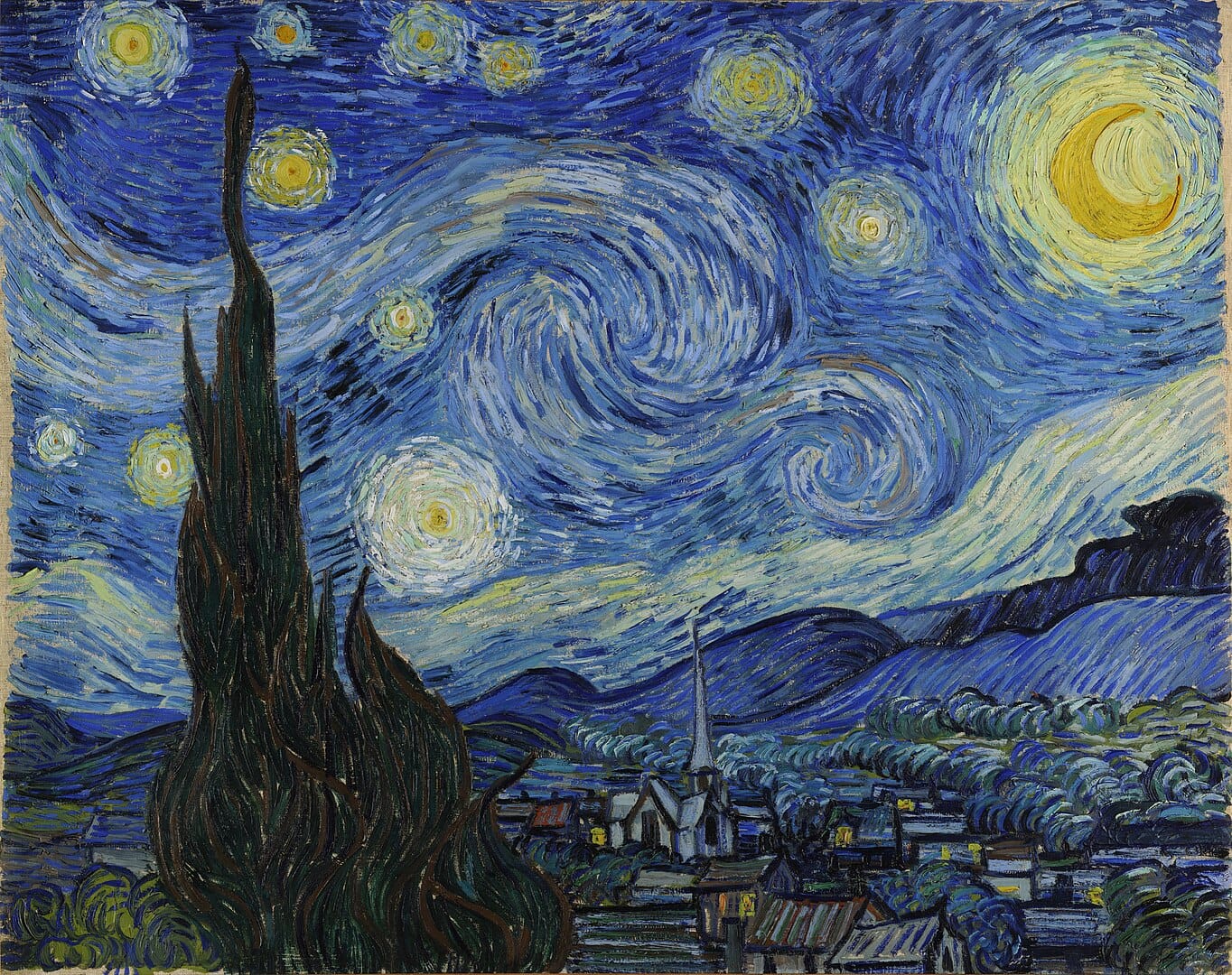
2. Sunflowers (1888–1889)
Van Gogh painted his renowned Sunflowers series in Arles to decorate the home where he lived with artist Paul Gauguin. The radiant yellow flowers at various bloom stages represent joyfulness and warmth while illustrating life's ephemeral nature. The strong yellow tones combined with a thickly applied impasto technique produce a visually captivating effect that continues to draw in viewers. The energetic brushstrokes create an impression of movement within the sunflowers which infuses the artwork with life.
Symbolic meaning in color choices runs through all of Van Gogh's art which applies equally to his Sunflowers series. The yellow flowers served as symbols of life and vitality beyond their natural beauty. Van Gogh assigned symbolic value to yellow as it represented hope alongside temporal progression while standing in contrast to the somber tones found in his emotionally intense pieces.

3. The Bedroom (1888)
Van Gogh’s painting portrays his humble bedroom at the Yellow House and stands as one of his most intimate pieces. The scene achieves a dreamlike atmosphere through its slightly skewed perspective. Through his deliberate choice of rich blues and warm reds he created an atmosphere of restfulness and stability which stood in opposition to the turbulence of his personal experiences. The deliberate distortions combined with visible brushwork generate emotional tension and create a room atmosphere that is both intimate and unsettling.

4. Café Terrace at Night (1888)
Van Gogh displayed his fascination with light and color through this nighttime scene set at a cozy outdoor café in Arles. The bright yellow tones of the café clash with the deep blue night sky to produce both welcoming and enigmatic surroundings. The lack of sharp outlines together with warm and cool color interactions turns this painting into an expert examination of atmospheric and emotional depth. His dynamic brushwork creates a moving effect on the cobblestone street and lanterns that draws viewers into the lively night scene.

5. Wheatfield with Crows (1890)
Wheatfield with Crows serves as one of his last artistic creations with its stormy sky above a golden wheat field where black crows fly ominously. The strong brushstrokes and stark light-dark contrasts generate an ominous mood. Critics view the painting as a representation of Van Gogh’s emotional distress during his last weeks. The heavy impasto gives the waving wheat an appearance of movement which intensifies the painting's emotional expression.

6. Irises (1889)
Van Gogh painted Irises while he was hospitalized at the asylum which shows his admiration for Japanese woodblock prints. The painting features individual flowers where each one receives a unique portrayal to highlight their fragile beauty. The bright blue and green hues stand out against the yellow ground to create both harmony and motion. The lively brushwork creates a dance-like effect in the irises while imbuing them with intense emotion and energy.
Van Gogh's enduring legacy includes his masterful depictions of flowers. These subjects held great personal significance while functioning as means for deeper artistic expression. The artist's careful depiction of flowers emphasized their delicate beauty and fragility as a demonstration of his understanding of life's ephemeral nature. The images of Irises and Almond Blossom in Van Gogh's work embody themes of hope and renewal while connecting deeply with nature which were central elements of his philosophy.

7. Almond Blossom (1890)
Van Gogh painted Almond Blossom as a birthday present for his newborn nephew and this piece stands as one of his most peaceful and optimistic creations. When delicate white blossoms appear against the bright blue sky they represent fresh beginnings. The cropped composition and clear bold outlines show Japanese art's influence. The branches show fluid strokes that extend upwards with gentle yet determined energy to represent renewal and growth.

8. The Night Café (1888)
Van Gogh characterized this painting as his effort to represent "the terrible passions of humanity." The intense combination of red and green hues together with distorted perspective produces a tight and disturbing environment in the artwork. This artwork emits feelings of solitude while exploring the bleak aspects of nightlife and human nature. The scene appears tense and lifelike through his vigorous brushstrokes and dense paint application which transports viewers into its unsettling mood.
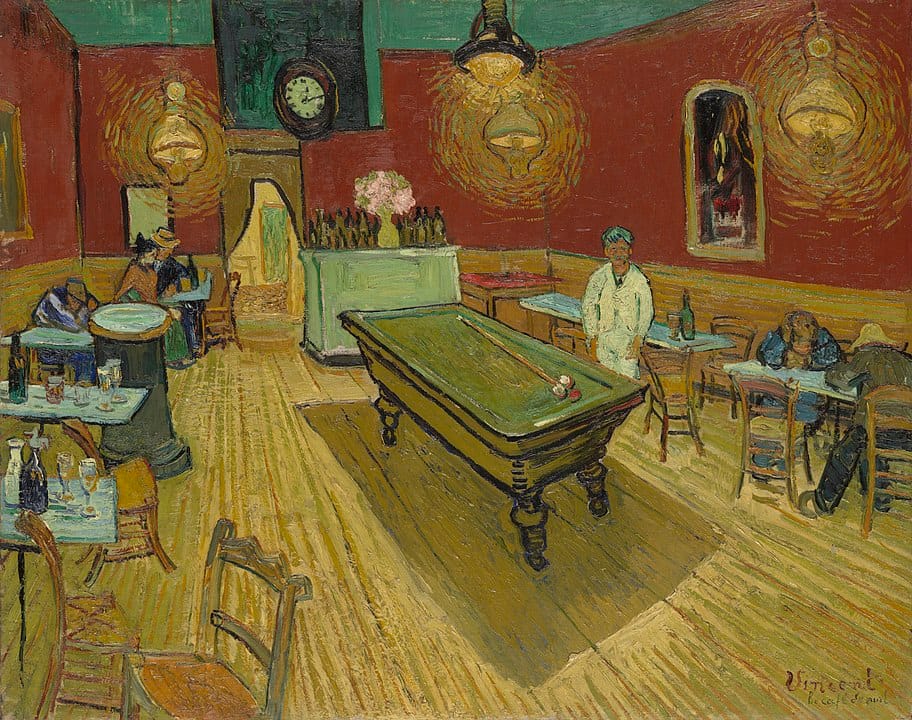
9. Self-Portrait with Bandaged Ear (1889)
After experiencing the infamous event where he severed his ear, Van Gogh created this haunting self-portrait. The painting communicates his physical and emotional torment through cool colors and a serious expression. This artwork goes beyond depicting his physical wound to expose his vulnerable mental condition. His visible swirling brushstrokes generate emotional intensity that allows viewers to feel his pain and strength.

10. Starry Night Over the Rhône (1888)
The nocturnal landscape with star reflections on the Rhône River demonstrates Van Gogh's mastery in depicting magical light effects. The combination of rich blue and yellow hues establishes a dreamlike atmosphere while two small figures contribute romantic elements. This artwork demonstrates Van Gogh’s intense fascination with nocturnal skies together with his conviction that nature holds spiritual power. Dynamic brushstrokes from Van Gogh animate the water with ripples and make stars flicker which creates an immersive artistic experience.

Audiences from around the world remain captivated by Van Gogh’s artistic masterpieces. Through his skillful transformation of raw emotion into painted art and his creative use of color and form he established himself as one of history's most extraordinary artists. His paintings retain their status as eternal representations of beauty and artistic genius regardless of whether they hang in museums or fetch astronomical prices at auctions. His painting methods infuse his work with dynamic movement and emotional depth which makes each piece feel vibrant and accessible to viewers.
